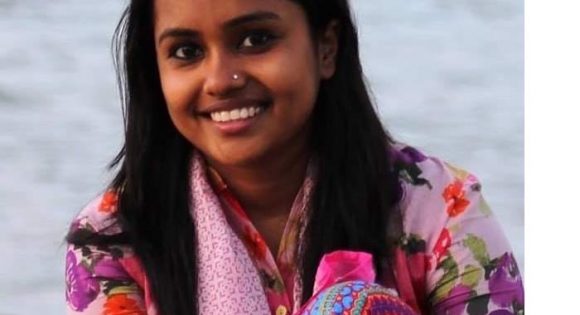Liselle Yorke
Former Senior Public Relations Manager

May 10, 2021
Former Senior Public Relations Manager
Jesmin Papri is an investigative journalist in Bangladesh and a 2019 alumna of PRB’s PACE Women’s Edition program. In 2020, she visited the Satkhira district in southern Bangladesh to write about the community’s recovery 11 years after Cyclone Aila. She left with questions about the number of young women in the area with uterine diseases, and later published an investigative report on Bangladeshi news site Jagonews24.com (article in Bengali; in Chrome browser, right-click and select Translate to read in English).
Climate change has contributed to an increase in water salinity in coastal Bangladesh, and there are concerns about the impact of saltier water on women’s health. During her reporting, Papri spoke with 60 local women who reported suffering from uterine diseases; 25 said they underwent hysterectomies. Medical records and interviews with medical experts and community members also pointed to higher rates of anemia, leukorrhea, and menstrual problems among women and girls living in these areas.
We asked Papri about her reporting in Satkhira, her experience as a female investigative reporter, and the impact of her Women’s Edition training. This correspondence has been edited for length and clarity.
What motivated you to become a journalist?
I’ve always wanted to be the voice of the common people and to be by their side. Journalism is a means of easily conveying the message of the common people to policymakers. That is why I chose this profession—it gives me the opportunity to seek accountability from policymakers as a representative of ordinary people.

What is the most challenging part of being a journalist in Bangladesh?
Any profession in Bangladesh is challenging for women but being a woman journalist is even more challenging. With the exception of a handful of media houses in Bangladesh, women face problems with salary structure, working environment, and opportunities. Investigative work on any issue brings added difficulties for women because we usually work on entertainment or soft issues.
How did you become aware of your story?
Several years after Cyclone Aila hit, I went to Satkhira, one of the southern districts of Bangladesh, for follow-up reporting. While talking to the women there, I learned that many were suffering from various diseases related to the uterus and were also cutting their uteruses at an early age. At first, I thought it was caused by physical illness, but after encountering a few such case studies in the same village, the issue raised doubts and questions in my mind. I shared my observations at a workshop on climate change hosted by the Management and Resources Development Initiative (MRDI). Later on, MRDI supported me in working on the issue.
What did it take to report your story?
I talked to women from at least 10 villages in the Satkhira district and analyzed data from several hospitals and private clinics. I also got information from remote villages where the communications system was so bad, I had to walk long distances.
Talking to the women about this sensitive issue was a big challenge and collecting information from hospitals was also not so easy. On some occasions, I had to take my two-year old twin girls with me—that was quite a challenge for them too.
Has anything changed as a result of your reporting?
I have received a lot of feedback from various quarters, including policymakers who said they will ensure there is safe water in the coastal areas. Many of my colleagues have also expressed interest in reporting further on this issue.
What did you gain from participating in the Women’s Edition program?
It was very productive, and I learned a lot from participants and resource persons from various countries. I learned about journalism culture and challenges facing reporters in other South Asian countries, which helped me to evaluate the scenario in my country. I also learned about the working experiences of fellow journalists, the nature of their assignments, and aspects of reporting and report writing. The most impactful part was learning how to overcome professional hurdles to produce quality work.
How has your career changed since you participated in the Women’s Edition?
This training had a positive impact on my career. Having international training has improved my skills and knowledge, as well as the quality of my reporting and how I work. Consequently, my office has relied on me and given me major assignments; this has enriched my CV.
What is your advice for other women journalists, particularly those interested in investigative reporting?
Just as women in Bangladesh face impediments at home and in the office, they encounter similar barriers in investigative journalism. Journalism requires you to be persistent and investigative journalism is highly challenging and time consuming. The lack of cooperation from authorities makes investigative journalism even tougher. So, essential groundwork must be done before going into the field to prepare for the challenges you may face. You have to stick to your goal.
What inspires you to continue your work?
Opportunities for journalism in Bangladesh are much better now and many media organizations have come forward with technical support for journalism. The impact of my work inspires me to do better. Feedback that victims have especially benefited from my reporting brings me peace in my mind. My family has been encouraging and inspires me all the time.
What are stories you hope to cover in the future?
Opportunities for journalism in Bangladesh are much better now and many media organizations have come forward with technical support for journalism. The impact of my work inspires me to do better. Feedback that victims have especially benefited from my reporting brings me peace in my mind. My family has been encouraging and inspires me all the time.
